This photographer spent two years documenting life for the women forced to leave Ukraine
Within hours of the Russian invasion in February 2022, Ukraine’s President Volodymyr Zelensky invoked martial law across the country, setting in motion an ongoing defence operation and signing a decree to mobilize conscripts. With eligible men aged between 18-60 not being allowed to leave Ukraine, news reports were filled with images of mostly women and young children fleeing the country, wrapped in blankets or with grandparents nearby.
Like many of us, in the early days of the war, British photographer Polly Braden’s grasp of what was happening was informed by TV and newspaper coverage. In it, she recognized the correlation between what she was witnessing and her own practice. “I’d made this body of work about single parents (‘Holding the Baby,’ 2022), and seeing these women leaving Ukraine, I thought about everything they were going to have to do to support the children and older people they were bringing with them,” she told CNN in an interview.
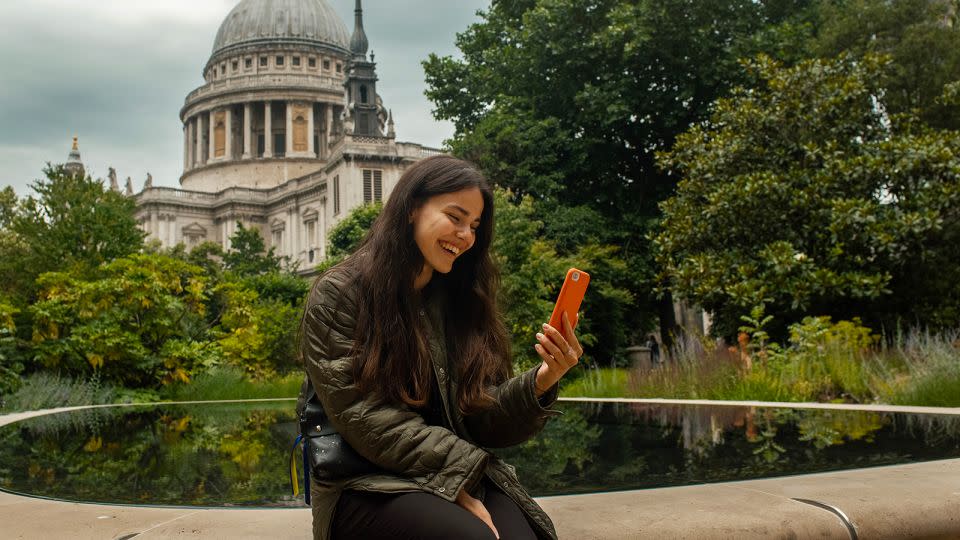
Weeks after those initial reportage images began being shown, Braden flew to Moldova, which shares a border with Ukraine, inspired to work on a new series. “It felt important to record what was going to happen to these women. They were going to have to find housing, schooling, jobs… to build new lives,” she explained. “It also meant they suddenly became refugees — they might have been teachers, lawyers, important people in their community — what was that going to look like for them?” The project would ultimately become an exhibition called “Leaving Ukraine,” currently on display at the Foundling Museum in London.
“Of course, it’s important we have pictures of the frontline and what’s happening inside Ukraine, but it’s also important we understand what role women play in war, especially this war, where women have given up their status in their country,” continued Braden, reflecting on the traditionally gendered approach to documenting conflict. “They are safeguarding the next generation of Ukraine.”
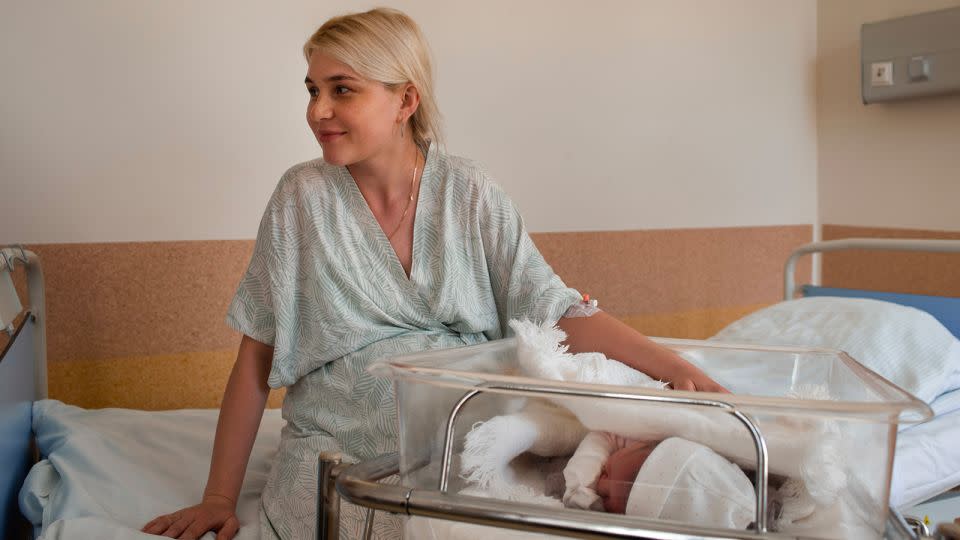
Spanning two years (the most recent image was taken in early March 2024) and featuring a mix of still photography and moving image, “Leaving Ukraine” closely follows the stories of six women Braden met when she travelled to Moldova: law graduate Lena, pregnant mother Anya, school friends Sofiia, Aliesia and Yuliia, and Narine who left Ukraine with her children and a close friend.
Conscious of the work’s broader scope, Braden considers “Leaving Ukraine” not just a depiction of these six women and their families, but also as a reflection of the countries they’ve ended up in, which include Italy, Poland and the UK. According to the UNHCR’s most recent report, Moldova has received over 850,000 Ukrainian refugees and more than 120,000 third country nationals since February 22, 2022. Of them, as of November 12, 2023, more than 113,000 have stayed on in the country.
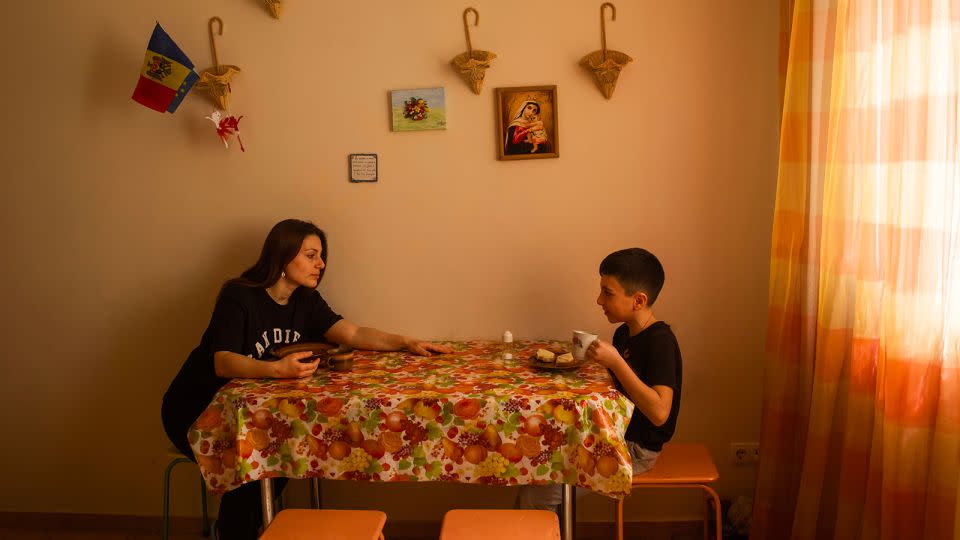
“I thought I’d meet people in a country then follow them building a life there, but not one person I met has landed in a country, found their feet and made it work,” she shared. “They’ve had to move because they can’t find work, there’s no housing, they can’t get their kid to school — or they’ve landed in the countryside in a country they’ve never been to.”
Braden describes the project as wholly collaborative, detailing her close work with the women to construct an intimate portrait of their new reality (photographing Anya, for example, just hours after she gave birth). Many of the images are tender studies of private moments, shot in homes, social spaces and on public transport. “They’ve been telling their own story really, I’ve just been holding a camera,” she said.
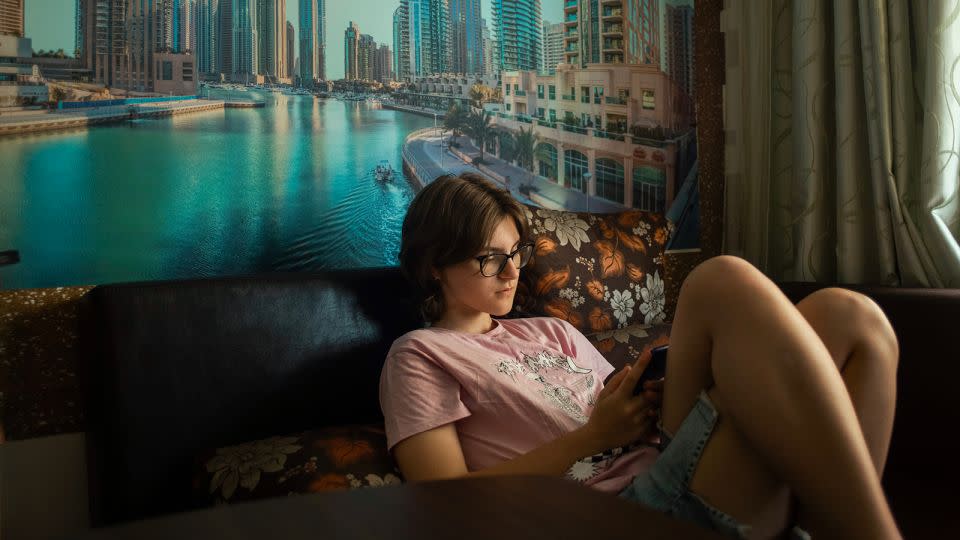
Lena, who Braden recalled had become irritated speaking to journalists in Moldova, later came to live with her in London. The photographer noted how they didn’t take any photos during this period. “I thought it was quite invasive,” she said, reflecting on the trust they’d developed. “After all it’s a privilege, (this work). And finding a new life is like a jigsaw, right?” Lena has since moved out, meeting a partner and having a baby, and Braden is conscious of how the war has affected her family’s trajectory. “The child hopefully will speak Ukrainian, but they’re an English family,” she said.
Elsewhere, with two teenagers of her own, the photographer has taken great pleasure in working with the three schoolgirls, one of whom is now studying film in Warsaw and used the project in her coursework. “The most amazing part about following young people, like Sofiia, Aliesia and Yuliia, is they’re optimistic and full of the joys of life,” she said. “Wanting love and all the normal things young people want.”
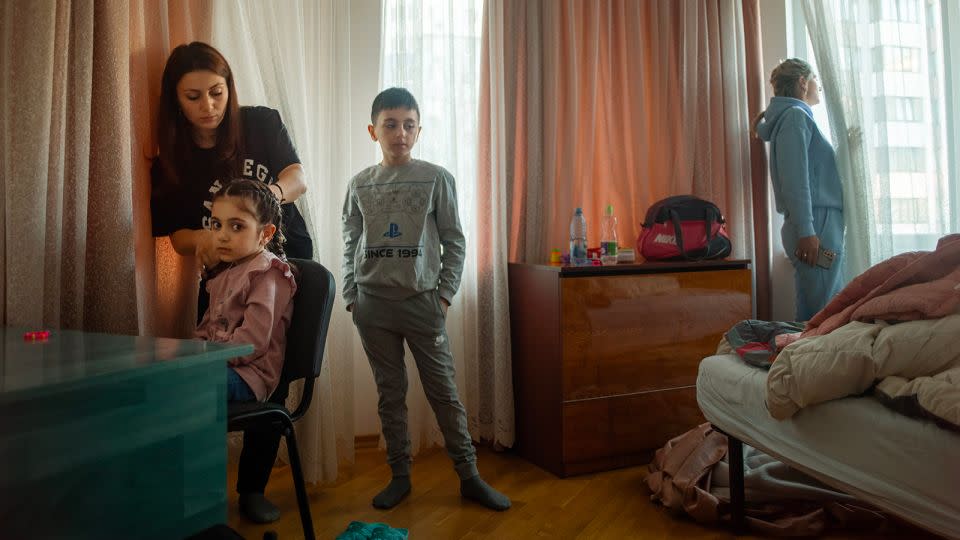
Initially, Braden had envisioned she’d be able to return to Ukraine with some of the women, but with the war now in its third year, that has not yet been possible. Ultimately she determined that the series is about building a life away from home, and “finding new paths in Europe.”
Similarly, her commitment to just a small group of families, in tandem with her long-term approach, allowed her to harness greater power in her storytelling. “If we don’t look at individual stories,” she clarified, “then big policies are made without understanding details.”
Polly Braden’s exhibition “Leaving Ukraine” is on at the Foundling Museum in London until September 1, 2024.
For more CNN news and newsletters create an account at CNN.com

